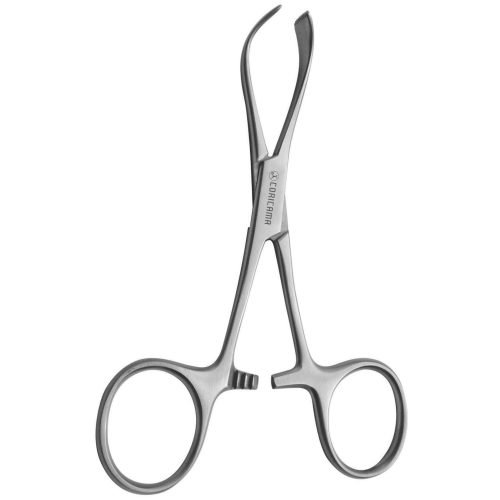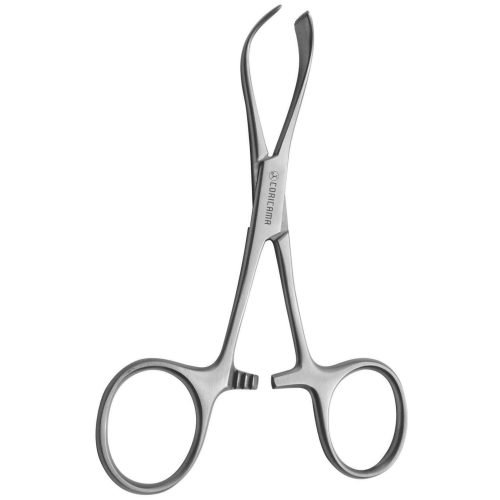-
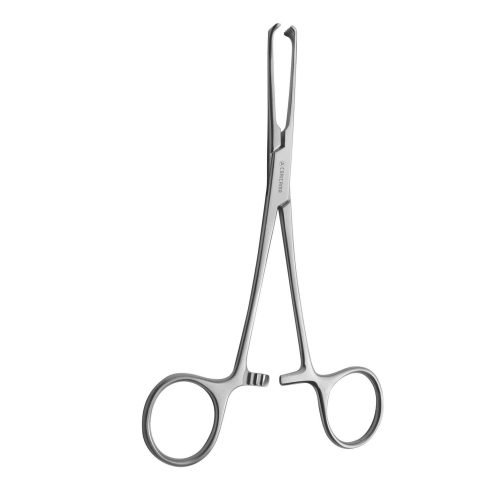 <div class="desc_p"> <p>Used to grasp soft tissue.<br> (aka: Allis clamp, Allis forceps)<br> 3 tines / 4 tines</p> <ul><li>Instrument name: <span>Allis [150mm (5.91in)]</span></li><li>Tip: <span>Straight, Serrated</span></li><li>Tip Material: <span>Stainless Steel</span></li><li>Handle Material: <span>Stainless Steel</span></li></ul> <!-- pdf --> </div>
<div class="desc_p"> <p>Used to grasp soft tissue.<br> (aka: Allis clamp, Allis forceps)<br> 3 tines / 4 tines</p> <ul><li>Instrument name: <span>Allis [150mm (5.91in)]</span></li><li>Tip: <span>Straight, Serrated</span></li><li>Tip Material: <span>Stainless Steel</span></li><li>Handle Material: <span>Stainless Steel</span></li></ul> <!-- pdf --> </div> -
 <div class="desc_p"> <p>Used to grasp soft tissue.<br> (aka: Allis clamp, Allis forceps)<br> 4 tines / 5 tines</p> <ul><li>Instrument name: <span>Allis [200mm (7.87in)]</span></li><li>Tip: <span>Straight, Serrated</span></li><li>Tip Material: <span>Stainless Steel</span></li><li>Handle Material: <span>Stainless Steel</span></li></ul> <!-- pdf --> </div>
<div class="desc_p"> <p>Used to grasp soft tissue.<br> (aka: Allis clamp, Allis forceps)<br> 4 tines / 5 tines</p> <ul><li>Instrument name: <span>Allis [200mm (7.87in)]</span></li><li>Tip: <span>Straight, Serrated</span></li><li>Tip Material: <span>Stainless Steel</span></li><li>Handle Material: <span>Stainless Steel</span></li></ul> <!-- pdf --> </div> -
 <div class="desc_p"> <p>Used to grasp soft tissue.<br> (aka: Allis clamp, Allis forceps)<br> 6 tines / 7 tines </p> <ul><li>Instrument name: <span>Allis [200mm (7.87in)]</span></li><li>Tip: <span>Straight, Serrated</span></li><li>Tip Material: <span>Stainless Steel</span></li><li>Handle Material: <span>Stainless Steel</span></li></ul> <!-- pdf --> </div>
<div class="desc_p"> <p>Used to grasp soft tissue.<br> (aka: Allis clamp, Allis forceps)<br> 6 tines / 7 tines </p> <ul><li>Instrument name: <span>Allis [200mm (7.87in)]</span></li><li>Tip: <span>Straight, Serrated</span></li><li>Tip Material: <span>Stainless Steel</span></li><li>Handle Material: <span>Stainless Steel</span></li></ul> <!-- pdf --> </div> -
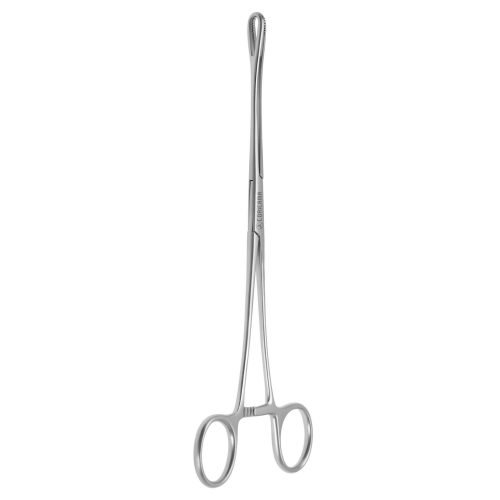 <div class="desc_p"> <p>Used to apply or manipulate a dressing, e.g., cotton swabs, on the tissue during a surgical intervention. It typically has two main designs: 1) a self-retaining, scissors-like design with ring handles and the working end with a variety of designs, e.g., straight, angled, or curved with grooves and serrations to ensure grip; and 2) tweezers-like design (may be a micro/fine instrument) with two conjoined blades and serrated tips at the working end.<br> Swab Holding Forceps<br> Dressing sponge forceps </p> <p>Fenestrated beaks</p> <ul><li>Instrument name: <span>Foerster [200mm (7.87in)]</span></li><li>Tip: <span>Straight, Serrated, Perforated</span></li><li>Tip Material: <span>Stainless Steel</span></li><li>Handle: <span>Straight</span></li><li>Handle Material: <span>Stainless Steel</span></li></ul> <!-- pdf --> </div>
<div class="desc_p"> <p>Used to apply or manipulate a dressing, e.g., cotton swabs, on the tissue during a surgical intervention. It typically has two main designs: 1) a self-retaining, scissors-like design with ring handles and the working end with a variety of designs, e.g., straight, angled, or curved with grooves and serrations to ensure grip; and 2) tweezers-like design (may be a micro/fine instrument) with two conjoined blades and serrated tips at the working end.<br> Swab Holding Forceps<br> Dressing sponge forceps </p> <p>Fenestrated beaks</p> <ul><li>Instrument name: <span>Foerster [200mm (7.87in)]</span></li><li>Tip: <span>Straight, Serrated, Perforated</span></li><li>Tip Material: <span>Stainless Steel</span></li><li>Handle: <span>Straight</span></li><li>Handle Material: <span>Stainless Steel</span></li></ul> <!-- pdf --> </div> -
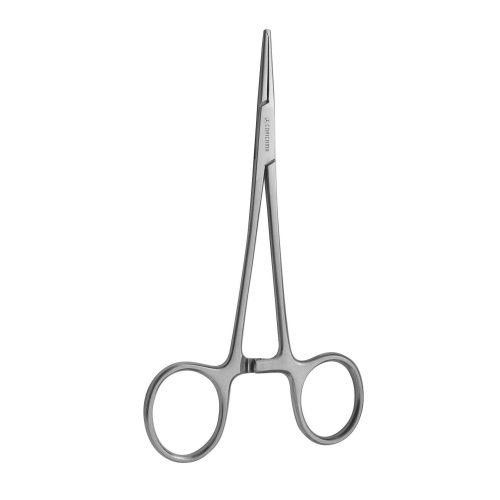 <div class="desc_p"> <p>Straight or curved scissor plier with serrated blades used in the constriction of blood vessels during surgery to prevent bleeding and control haemorrhage.<br> Hemostats (Haemostats), Arterial Forceps, Artery Forceps, Artery Clips, Hemostatic Clamp </p> <p>Locking forceps used to compress an artery to forestall bleeding. The thumb and middle or ring fingers grasp the finger loops, while the index finger helps guide the instrument, to facilitate handling. The locking mechanism consists of a series of interlocking teeth located near the finger loops that allow the user to adjust the clamping force of the pliers. As the forceps are closed, the teeth engage and keep the instrument’s tips from separating. A simple shift of the fingers is all that is needed to dis-engage the teeth and open the pliers.</p> <ul><li>Instrument name: <span>Halstead Mosquito [125mm (4.92in)]</span></li><li>Tip: <span>Straight, Serrated, 1x2</span></li><li>Tip Material: <span>Stainless Steel</span></li><li>Handle Material: <span>Stainless Steel</span></li></ul> <!-- pdf --> </div>
<div class="desc_p"> <p>Straight or curved scissor plier with serrated blades used in the constriction of blood vessels during surgery to prevent bleeding and control haemorrhage.<br> Hemostats (Haemostats), Arterial Forceps, Artery Forceps, Artery Clips, Hemostatic Clamp </p> <p>Locking forceps used to compress an artery to forestall bleeding. The thumb and middle or ring fingers grasp the finger loops, while the index finger helps guide the instrument, to facilitate handling. The locking mechanism consists of a series of interlocking teeth located near the finger loops that allow the user to adjust the clamping force of the pliers. As the forceps are closed, the teeth engage and keep the instrument’s tips from separating. A simple shift of the fingers is all that is needed to dis-engage the teeth and open the pliers.</p> <ul><li>Instrument name: <span>Halstead Mosquito [125mm (4.92in)]</span></li><li>Tip: <span>Straight, Serrated, 1x2</span></li><li>Tip Material: <span>Stainless Steel</span></li><li>Handle Material: <span>Stainless Steel</span></li></ul> <!-- pdf --> </div> -
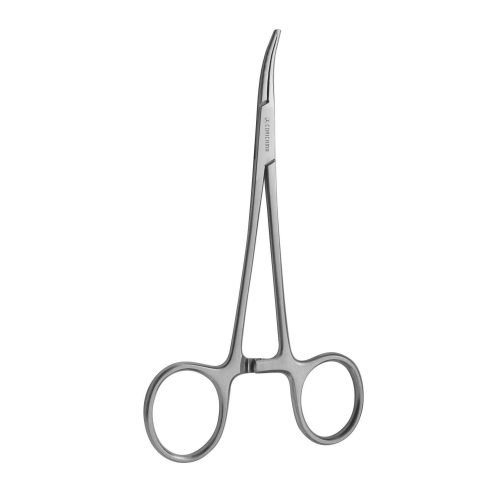 <div class="desc_p"> <p>Straight or curved scissor plier with serrated blades used in the constriction of blood vessels during surgery to prevent bleeding and control haemorrhage.<br> Hemostats (Haemostats), Arterial Forceps, Artery Forceps, Artery Clips, Hemostatic Clamp </p> <p>Locking forceps used to compress an artery to forestall bleeding. The thumb and middle or ring fingers grasp the finger loops, while the index finger helps guide the instrument, to facilitate handling. The locking mechanism consists of a series of interlocking teeth located near the finger loops that allow the user to adjust the clamping force of the pliers. As the forceps are closed, the teeth engage and keep the instrument’s tips from separating. A simple shift of the fingers is all that is needed to dis-engage the teeth and open the pliers.</p> <ul><li>Instrument name: <span>Halstead Mosquito [125mm (4.92in)]</span></li><li>Tip: <span>Curved, Serrated, 1x2</span></li><li>Tip Material: <span>Stainless Steel</span></li><li>Handle Material: <span>Stainless Steel</span></li></ul> <!-- pdf --> </div>
<div class="desc_p"> <p>Straight or curved scissor plier with serrated blades used in the constriction of blood vessels during surgery to prevent bleeding and control haemorrhage.<br> Hemostats (Haemostats), Arterial Forceps, Artery Forceps, Artery Clips, Hemostatic Clamp </p> <p>Locking forceps used to compress an artery to forestall bleeding. The thumb and middle or ring fingers grasp the finger loops, while the index finger helps guide the instrument, to facilitate handling. The locking mechanism consists of a series of interlocking teeth located near the finger loops that allow the user to adjust the clamping force of the pliers. As the forceps are closed, the teeth engage and keep the instrument’s tips from separating. A simple shift of the fingers is all that is needed to dis-engage the teeth and open the pliers.</p> <ul><li>Instrument name: <span>Halstead Mosquito [125mm (4.92in)]</span></li><li>Tip: <span>Curved, Serrated, 1x2</span></li><li>Tip Material: <span>Stainless Steel</span></li><li>Handle Material: <span>Stainless Steel</span></li></ul> <!-- pdf --> </div> -
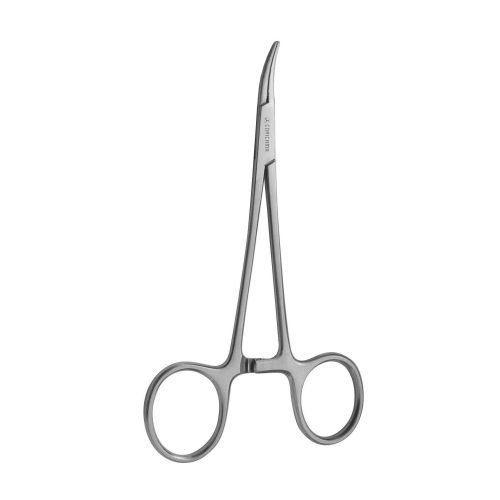 <div class="desc_p"> <p>Straight or curved scissor plier with serrated blades used in the constriction of blood vessels during surgery to prevent bleeding and control haemorrhage.<br> Hemostats (Haemostats), Arterial Forceps, Artery Forceps, Artery Clips, Hemostatic Clamp </p> <p>Locking forceps used to compress an artery to forestall bleeding. The thumb and middle or ring fingers grasp the finger loops, while the index finger helps guide the instrument, to facilitate handling. The locking mechanism consists of a series of interlocking teeth located near the finger loops that allow the user to adjust the clamping force of the pliers. As the forceps are closed, the teeth engage and keep the instrument’s tips from separating. A simple shift of the fingers is all that is needed to dis-engage the teeth and open the pliers.</p> <ul><li>Instrument name: <span>Halstead Mosquito [125mm (4.92in)]</span></li><li>Tip: <span>Curved, Serrated</span></li><li>Tip Material: <span>Stainless Steel</span></li><li>Handle Material: <span>Stainless Steel</span></li></ul> <!-- pdf --> </div>
<div class="desc_p"> <p>Straight or curved scissor plier with serrated blades used in the constriction of blood vessels during surgery to prevent bleeding and control haemorrhage.<br> Hemostats (Haemostats), Arterial Forceps, Artery Forceps, Artery Clips, Hemostatic Clamp </p> <p>Locking forceps used to compress an artery to forestall bleeding. The thumb and middle or ring fingers grasp the finger loops, while the index finger helps guide the instrument, to facilitate handling. The locking mechanism consists of a series of interlocking teeth located near the finger loops that allow the user to adjust the clamping force of the pliers. As the forceps are closed, the teeth engage and keep the instrument’s tips from separating. A simple shift of the fingers is all that is needed to dis-engage the teeth and open the pliers.</p> <ul><li>Instrument name: <span>Halstead Mosquito [125mm (4.92in)]</span></li><li>Tip: <span>Curved, Serrated</span></li><li>Tip Material: <span>Stainless Steel</span></li><li>Handle Material: <span>Stainless Steel</span></li></ul> <!-- pdf --> </div> -
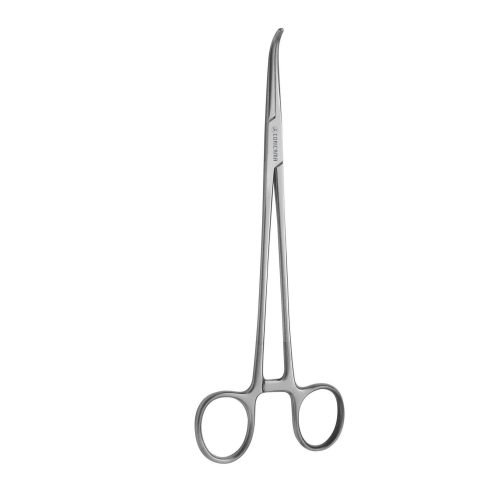 <div class="desc_p"> <p>Straight or curved scissor plier with serrated blades used in the constriction of blood vessels during surgery to prevent bleeding and control haemorrhage.<br> Hemostats (Haemostats), Arterial Forceps, Artery Forceps, Artery Clips, Hemostatic Clamp </p> <p>Locking forceps used to compress an artery to forestall bleeding. The thumb and middle or ring fingers grasp the finger loops, while the index finger helps guide the instrument, to facilitate handling. The locking mechanism consists of a series of interlocking teeth located near the finger loops that allow the user to adjust the clamping force of the pliers. As the forceps are closed, the teeth engage and keep the instrument’s tips from separating. A simple shift of the fingers is all that is needed to dis-engage the teeth and open the pliers.</p> <ul><li>Instrument name: <span>Heiss [200mm (7.87in)]</span></li><li>Tip: <span>Curved, Serrated</span></li><li>Tip Material: <span>Stainless Steel</span></li><li>Handle Material: <span>Stainless Steel</span></li></ul> <!-- pdf --> </div>
<div class="desc_p"> <p>Straight or curved scissor plier with serrated blades used in the constriction of blood vessels during surgery to prevent bleeding and control haemorrhage.<br> Hemostats (Haemostats), Arterial Forceps, Artery Forceps, Artery Clips, Hemostatic Clamp </p> <p>Locking forceps used to compress an artery to forestall bleeding. The thumb and middle or ring fingers grasp the finger loops, while the index finger helps guide the instrument, to facilitate handling. The locking mechanism consists of a series of interlocking teeth located near the finger loops that allow the user to adjust the clamping force of the pliers. As the forceps are closed, the teeth engage and keep the instrument’s tips from separating. A simple shift of the fingers is all that is needed to dis-engage the teeth and open the pliers.</p> <ul><li>Instrument name: <span>Heiss [200mm (7.87in)]</span></li><li>Tip: <span>Curved, Serrated</span></li><li>Tip Material: <span>Stainless Steel</span></li><li>Handle Material: <span>Stainless Steel</span></li></ul> <!-- pdf --> </div> -
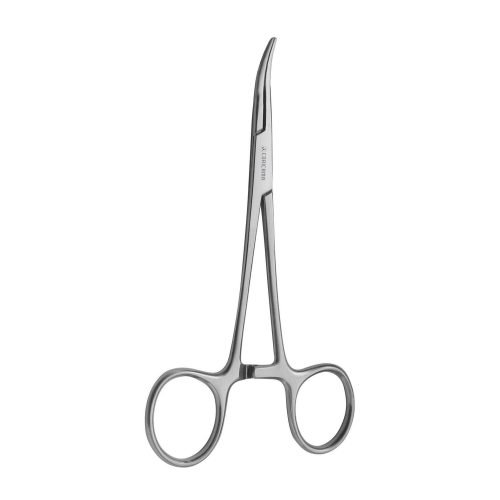 <div class="desc_p"> <p>Straight or curved scissor plier with serrated blades used in the constriction of blood vessels during surgery to prevent bleeding and control haemorrhage.<br> Hemostats (Haemostats), Arterial Forceps, Artery Forceps, Artery Clips, Hemostatic Clamp </p> <p>Locking forceps used to compress an artery to forestall bleeding. The thumb and middle or ring fingers grasp the finger loops, while the index finger helps guide the instrument, to facilitate handling. The locking mechanism consists of a series of interlocking teeth located near the finger loops that allow the user to adjust the clamping force of the pliers. As the forceps are closed, the teeth engage and keep the instrument’s tips from separating. A simple shift of the fingers is all that is needed to dis-engage the teeth and open the pliers.</p> <ul><li>Instrument name: <span>Kelly [140mm (5.51in)]</span></li><li>Tip: <span>Curved, Serrated</span></li><li>Tip Material: <span>Stainless Steel</span></li><li>Handle Material: <span>Stainless Steel</span></li></ul> <!-- pdf --> </div>
<div class="desc_p"> <p>Straight or curved scissor plier with serrated blades used in the constriction of blood vessels during surgery to prevent bleeding and control haemorrhage.<br> Hemostats (Haemostats), Arterial Forceps, Artery Forceps, Artery Clips, Hemostatic Clamp </p> <p>Locking forceps used to compress an artery to forestall bleeding. The thumb and middle or ring fingers grasp the finger loops, while the index finger helps guide the instrument, to facilitate handling. The locking mechanism consists of a series of interlocking teeth located near the finger loops that allow the user to adjust the clamping force of the pliers. As the forceps are closed, the teeth engage and keep the instrument’s tips from separating. A simple shift of the fingers is all that is needed to dis-engage the teeth and open the pliers.</p> <ul><li>Instrument name: <span>Kelly [140mm (5.51in)]</span></li><li>Tip: <span>Curved, Serrated</span></li><li>Tip Material: <span>Stainless Steel</span></li><li>Handle Material: <span>Stainless Steel</span></li></ul> <!-- pdf --> </div> -
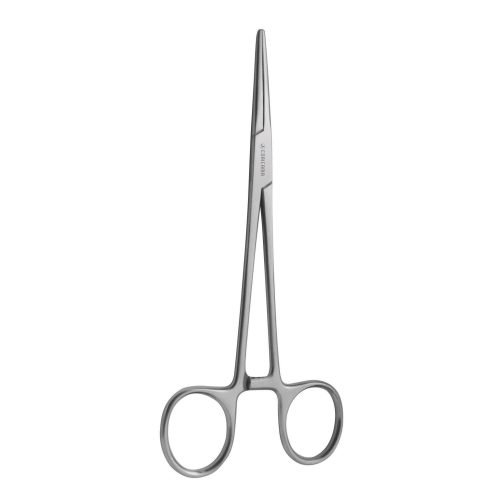 <div class="desc_p"> <p>Straight or curved scissor plier with serrated blades used in the constriction of blood vessels during surgery to prevent bleeding and control haemorrhage.<br> Hemostats (Haemostats), Arterial Forceps, Artery Forceps, Artery Clips, Hemostatic Clamp </p> <p>Locking forceps used to compress an artery to forestall bleeding. The thumb and middle or ring fingers grasp the finger loops, while the index finger helps guide the instrument, to facilitate handling. The locking mechanism consists of a series of interlocking teeth located near the finger loops that allow the user to adjust the clamping force of the pliers. As the forceps are closed, the teeth engage and keep the instrument’s tips from separating. A simple shift of the fingers is all that is needed to dis-engage the teeth and open the pliers.</p> <ul><li>Instrument name: <span>Kelly-Rankin [160mm (6.3in)]</span></li><li>Tip: <span>Straight, Serrated</span></li><li>Tip Material: <span>Stainless Steel</span></li><li>Handle Material: <span>Stainless Steel</span></li></ul> <!-- pdf --> </div>
<div class="desc_p"> <p>Straight or curved scissor plier with serrated blades used in the constriction of blood vessels during surgery to prevent bleeding and control haemorrhage.<br> Hemostats (Haemostats), Arterial Forceps, Artery Forceps, Artery Clips, Hemostatic Clamp </p> <p>Locking forceps used to compress an artery to forestall bleeding. The thumb and middle or ring fingers grasp the finger loops, while the index finger helps guide the instrument, to facilitate handling. The locking mechanism consists of a series of interlocking teeth located near the finger loops that allow the user to adjust the clamping force of the pliers. As the forceps are closed, the teeth engage and keep the instrument’s tips from separating. A simple shift of the fingers is all that is needed to dis-engage the teeth and open the pliers.</p> <ul><li>Instrument name: <span>Kelly-Rankin [160mm (6.3in)]</span></li><li>Tip: <span>Straight, Serrated</span></li><li>Tip Material: <span>Stainless Steel</span></li><li>Handle Material: <span>Stainless Steel</span></li></ul> <!-- pdf --> </div> -
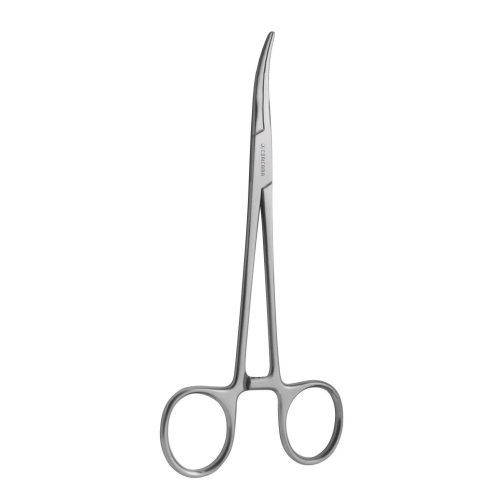 <div class="desc_p"> <p>Straight or curved scissor plier with serrated blades used in the constriction of blood vessels during surgery to prevent bleeding and control haemorrhage.<br> Hemostats (Haemostats), Arterial Forceps, Artery Forceps, Artery Clips, Hemostatic Clamp </p> <p>Locking forceps used to compress an artery to forestall bleeding. The thumb and middle or ring fingers grasp the finger loops, while the index finger helps guide the instrument, to facilitate handling. The locking mechanism consists of a series of interlocking teeth located near the finger loops that allow the user to adjust the clamping force of the pliers. As the forceps are closed, the teeth engage and keep the instrument’s tips from separating. A simple shift of the fingers is all that is needed to dis-engage the teeth and open the pliers.</p> <ul><li>Instrument name: <span>Kelly-Rankin [160mm (6.3in)]</span></li><li>Tip: <span>Curved, Serrated</span></li><li>Tip Material: <span>Stainless Steel</span></li><li>Handle Material: <span>Stainless Steel</span></li></ul> <!-- pdf --> </div>
<div class="desc_p"> <p>Straight or curved scissor plier with serrated blades used in the constriction of blood vessels during surgery to prevent bleeding and control haemorrhage.<br> Hemostats (Haemostats), Arterial Forceps, Artery Forceps, Artery Clips, Hemostatic Clamp </p> <p>Locking forceps used to compress an artery to forestall bleeding. The thumb and middle or ring fingers grasp the finger loops, while the index finger helps guide the instrument, to facilitate handling. The locking mechanism consists of a series of interlocking teeth located near the finger loops that allow the user to adjust the clamping force of the pliers. As the forceps are closed, the teeth engage and keep the instrument’s tips from separating. A simple shift of the fingers is all that is needed to dis-engage the teeth and open the pliers.</p> <ul><li>Instrument name: <span>Kelly-Rankin [160mm (6.3in)]</span></li><li>Tip: <span>Curved, Serrated</span></li><li>Tip Material: <span>Stainless Steel</span></li><li>Handle Material: <span>Stainless Steel</span></li></ul> <!-- pdf --> </div> -
 <div class="desc_p"> <p>Straight or curved scissor plier with serrated blades used in the constriction of blood vessels during surgery to prevent bleeding and control haemorrhage.<br> (AKA: Oschner – Hemostats (Haemostats), Arterial Forceps, Artery Forceps, Artery Clips, Hemostatic Clamp) </p> <p>Locking forceps used to compress an artery to forestall bleeding. The thumb and middle or ring fingers grasp the finger loops, while the index finger helps guide the instrument, to facilitate handling. The locking mechanism consists of a series of interlocking teeth located near the finger loops that allow the user to adjust the clamping force of the pliers. As the forceps are closed, the teeth engage and keep the instrument’s tips from separating. A simple shift of the fingers is all that is needed to dis-engage the teeth and open the pliers.</p> <ul><li>Instrument name: <span>Rochester-Kocher [140mm (5.51in)]</span></li><li>Tip: <span>Straight, Serrated, 1x2</span></li><li>Tip Material: <span>Stainless Steel</span></li><li>Handle Material: <span>Stainless Steel</span></li></ul> <!-- pdf --> </div>
<div class="desc_p"> <p>Straight or curved scissor plier with serrated blades used in the constriction of blood vessels during surgery to prevent bleeding and control haemorrhage.<br> (AKA: Oschner – Hemostats (Haemostats), Arterial Forceps, Artery Forceps, Artery Clips, Hemostatic Clamp) </p> <p>Locking forceps used to compress an artery to forestall bleeding. The thumb and middle or ring fingers grasp the finger loops, while the index finger helps guide the instrument, to facilitate handling. The locking mechanism consists of a series of interlocking teeth located near the finger loops that allow the user to adjust the clamping force of the pliers. As the forceps are closed, the teeth engage and keep the instrument’s tips from separating. A simple shift of the fingers is all that is needed to dis-engage the teeth and open the pliers.</p> <ul><li>Instrument name: <span>Rochester-Kocher [140mm (5.51in)]</span></li><li>Tip: <span>Straight, Serrated, 1x2</span></li><li>Tip Material: <span>Stainless Steel</span></li><li>Handle Material: <span>Stainless Steel</span></li></ul> <!-- pdf --> </div> -
 <div class="desc_p"> <p>Straight or curved scissor plier with serrated blades used in the constriction of blood vessels during surgery to prevent bleeding and control haemorrhage.<br> (AKA: Oschner – Hemostats (Haemostats), Arterial Forceps, Artery Forceps, Artery Clips, Hemostatic Clamp) </p> <p>Locking forceps used to compress an artery to forestall bleeding. The thumb and middle or ring fingers grasp the finger loops, while the index finger helps guide the instrument, to facilitate handling. The locking mechanism consists of a series of interlocking teeth located near the finger loops that allow the user to adjust the clamping force of the pliers. As the forceps are closed, the teeth engage and keep the instrument’s tips from separating. A simple shift of the fingers is all that is needed to dis-engage the teeth and open the pliers.</p> <ul><li>Instrument name: <span>Rochester-Kocher [140mm (5.51in)]</span></li><li>Tip: <span>Curved, Serrated, 1x2</span></li><li>Tip Material: <span>Stainless Steel</span></li><li>Handle Material: <span>Stainless Steel</span></li></ul> <!-- pdf --> </div>
<div class="desc_p"> <p>Straight or curved scissor plier with serrated blades used in the constriction of blood vessels during surgery to prevent bleeding and control haemorrhage.<br> (AKA: Oschner – Hemostats (Haemostats), Arterial Forceps, Artery Forceps, Artery Clips, Hemostatic Clamp) </p> <p>Locking forceps used to compress an artery to forestall bleeding. The thumb and middle or ring fingers grasp the finger loops, while the index finger helps guide the instrument, to facilitate handling. The locking mechanism consists of a series of interlocking teeth located near the finger loops that allow the user to adjust the clamping force of the pliers. As the forceps are closed, the teeth engage and keep the instrument’s tips from separating. A simple shift of the fingers is all that is needed to dis-engage the teeth and open the pliers.</p> <ul><li>Instrument name: <span>Rochester-Kocher [140mm (5.51in)]</span></li><li>Tip: <span>Curved, Serrated, 1x2</span></li><li>Tip Material: <span>Stainless Steel</span></li><li>Handle Material: <span>Stainless Steel</span></li></ul> <!-- pdf --> </div> -
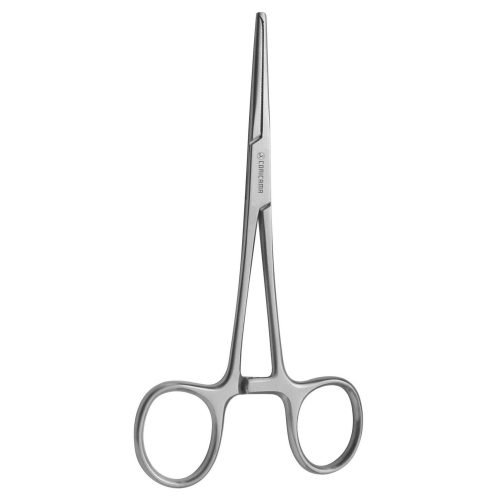 <div class="desc_p"> <p>Straight or curved scissor plier with serrated blades used in the constriction of blood vessels during surgery to prevent bleeding and control haemorrhage.<br> (AKA: Oschner – Hemostats (Haemostats), Arterial Forceps, Artery Forceps, Artery Clips, Hemostatic Clamp) </p> <p>Locking forceps used to compress an artery to forestall bleeding. The thumb and middle or ring fingers grasp the finger loops, while the index finger helps guide the instrument, to facilitate handling. The locking mechanism consists of a series of interlocking teeth located near the finger loops that allow the user to adjust the clamping force of the pliers. As the forceps are closed, the teeth engage and keep the instrument’s tips from separating. A simple shift of the fingers is all that is needed to dis-engage the teeth and open the pliers.</p> <ul><li>Instrument name: <span>Rochester-Kocher [160mm (6.3in)]</span></li><li>Tip: <span>Straight, Serrated, 1x2</span></li><li>Tip Material: <span>Stainless Steel</span></li><li>Handle Material: <span>Stainless Steel</span></li></ul> <!-- pdf --> </div>
<div class="desc_p"> <p>Straight or curved scissor plier with serrated blades used in the constriction of blood vessels during surgery to prevent bleeding and control haemorrhage.<br> (AKA: Oschner – Hemostats (Haemostats), Arterial Forceps, Artery Forceps, Artery Clips, Hemostatic Clamp) </p> <p>Locking forceps used to compress an artery to forestall bleeding. The thumb and middle or ring fingers grasp the finger loops, while the index finger helps guide the instrument, to facilitate handling. The locking mechanism consists of a series of interlocking teeth located near the finger loops that allow the user to adjust the clamping force of the pliers. As the forceps are closed, the teeth engage and keep the instrument’s tips from separating. A simple shift of the fingers is all that is needed to dis-engage the teeth and open the pliers.</p> <ul><li>Instrument name: <span>Rochester-Kocher [160mm (6.3in)]</span></li><li>Tip: <span>Straight, Serrated, 1x2</span></li><li>Tip Material: <span>Stainless Steel</span></li><li>Handle Material: <span>Stainless Steel</span></li></ul> <!-- pdf --> </div>

